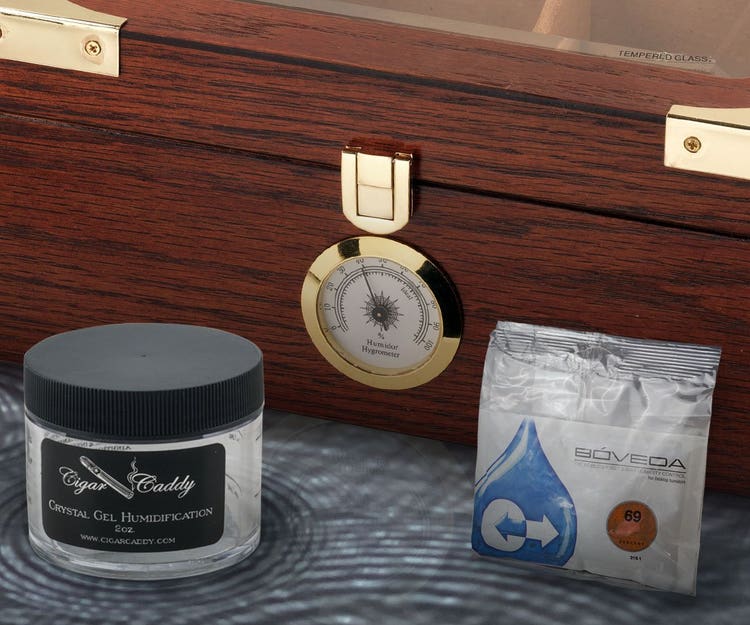
Choosing and seasoning a new humidor
If you’re looking for the best way to care for your cigars, you need to have a good “sense of humidor.” Here are a few pointers on the care and maintenance of your cigars’ future home. Remember, you have to be willing to make the commitment to maintaining a proper environment so your favorite cigars stay fresh and age properly.
1) The humidor should have good tight seal. Raise the lid about 3 inches and let it drop. You should hear a nice “whoosh” sound. That’s the sound of the air escaping, which tells you it’s a well-made box.
2) The inside should be lined with high-quality Spanish cedar that will resist cracking as the wood expands and contracts over time.
3) Prepping the box: Before you place your cigars in your new humidor you must “charge” the humidifier with distilled water ONLY or 50/50 solution (see #6). Make sure it’s been completely saturated. After putting it in place under the lid, dampen a new, unused kitchen sponge with distilled water. Place it on a plastic sandwich bag on the bottom of the humidor. Close the lid and let the box sit for up to three days to let the cedar absorb as much moisture as possible. The hygrometer should read somewhere in the mid to high 80% range by then. Remove the sponge, let the box settle down to about 72% RH, then put in the cigars. Boveda also makes a seasoning packet that you can use in lieu of the sponge. It’s an excellent solution and less complicated.
4) Do not keep the box anywhere it may be prone to mold or fungus like a damp basement. Only if your basement is cool and dry should you keep your humidor down there.
5) Never put the box in a room with wide sweeps in temperature or place the box in a part of the room where it will be in direct sun or lamp light.
6) Check your humidifier at least every two weeks and be sure to “re-charge” it only with distilled water or a polyglycol solution (Griffo, et. Al.) on a regular basis, at least once a month. IMPORTANT: If you have a green floral foam-filled humidifier, cut the 50/50 solution to about 1 oz. of solution to 6 oz. of distilled water. Polyglcol has a tendency to clog floral foam over time. (If you have a CREDO humidifier, it is recommended that you use their brand of wetting solution.) In the winter when the air is drier, you may have to do it more often. The same applies to those of you who live in very dry or desert regions of the country.
7) Check the box every few days and give your cigars the “pinch test” to see if they’re supple. If they’re too moist, cut back the humidity. Too dry, add a little more solution to the humidifier. Once you’re convinced you have attained a consistent balanced environment, you won’t need to check them as often. Also, about every two to four weeks, open the humidor lid for about 15-30 minutes to let some room air circulate through the box.
8) Temperature & Humidity: 70% humidity and 70 degrees are considered “ideal” but actually, it’s sometimes healthier to keep your cigars in the range of 65%-68% humidity and 65 degrees temp. Too much of both may cause mold, and even worse, the hatching of tobacco beetle eggs.
9) Even when calibrated, most common “circular gauge” type hygrometers have a +/- factor of 4 to 5%, so if your’s is not reading exactly 70% and you’re sure you’ve done everything according to Hoyle, don’t worry. Finally, if your humidor can’t maintain a consistent tropical climate it’s nothing more than a pretty wooden box.